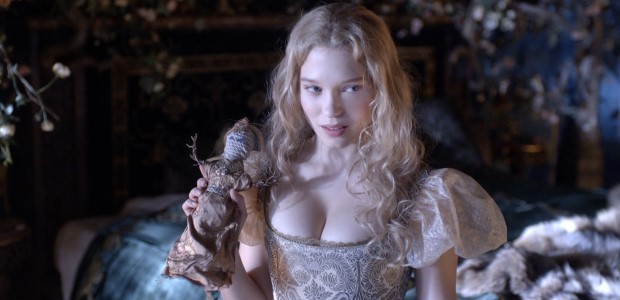Some 70 years before German brothers Jacob and Wilhelm Grimm created fairy-tale characters Rapunzel, Snow White and the rest, French novelist Gabrielle-Suzanne Barbot de Villeneuve wrote and published Belle et la Bête – the original fairy-tale we know as Beauty and the Beast. As a Franco-German production dubbed and retitled in English, that’s about the only thing original about this 2014 remake Beauty and the Beast.
Prince Charming is a beast, we already know that. But does he have to be boring too? Apparently, co-writer and director Christophe Gans seems to think so. Before deviating from the 1740 incarnation of the titular fairy tale, Gans’ begins his story on familiar ground. A wealthy merchant (André Dussollier) has lost his ships at sea and moves his three daughters and three sons to a cottage they all hate but one that I can only dream of owning. The first deviation is the three sons, a subplot that gives rise to generous CGI meant for the action finale. But before that we learn that five of them are spoilt brats that would tell peasants to eat cake when they can’t afford bread. Belle (Léa Seydoux), the youngest, is the only one with a heart of gold. While her siblings miss their former wealth (and cake), Belle is content with feeding them vegetables from her pumpkin patch. So when daddy goes into town, Belle only asks for a rose, while the rest asks for the moon (and cake). Of course, daddy ends up in the wrong place at the wrong time and then plucks the best rose. We know what happens here on. The rose belongs to a wretched beast who spares daddy’s life only to hold Belle ransom until she gives in to his manly demands. And to think this story is being told for generations to children before they go to bed!
It takes a few yawns and couple more winks before we actually see the beast, a CGI spectacle that’s bound to knock Andy Serkis into uncontrollable spasms of laughter. Vincent Cassel plays a sheep in beast’s clothing with as much tenacity as a wolf stalking a snail. Conversely, the only times he seems threatening are during flashbacks where we see him in human form as a spirited but arrogant prince. These flashbacks are shown as Belle’s visions. She’s bored (like us) and wanders around the desolate castle until she finds a huge mirror that never comments on her beauty (which is fine because the talking mirror belongs in a Grimm’s fairy tale). Instead, she sees the man behind the beast and secretly feels the hots for him. Well, not really, because Gans deviates again, and instead of the originally themed romance, we get a mangled face-off between the aforementioned brothers and a bunch of villainous thieves. Owing to which, Seydoux and Cassell have little screen time together and never enough reason to emote. It’s almost as if Gans has forgotten where the story must ultimately converge with the original and central theme of never judging a book by its cover. By this time Gans has also arm-twisted the story to reveal the mysterious spell that turned the Prince into a reclusive creature. It’s a twist revelation but one that feels snatched out of a tragic Greek love story.
If ever there’s a dire need to watch this film, it would be for Christophe Beaucarne’s stunning cinematography – a technical feat that somehow works in tandem with the heavy use of visual effects. Some of the backdrops are almost as impressive as those created in The Hobbit films and that’s saying a lot. The other reason is watching Belle’s transformation into a bodacious babe. Like my running ‘cake’ gag, Belle has her own – an array of bejewelled gowns she must wear each day at the dinner table to please her lord and beast. Forget about true love and all that jazz, the sight of bodice meeting bosom can transform any man into a beast!
Rating: 




